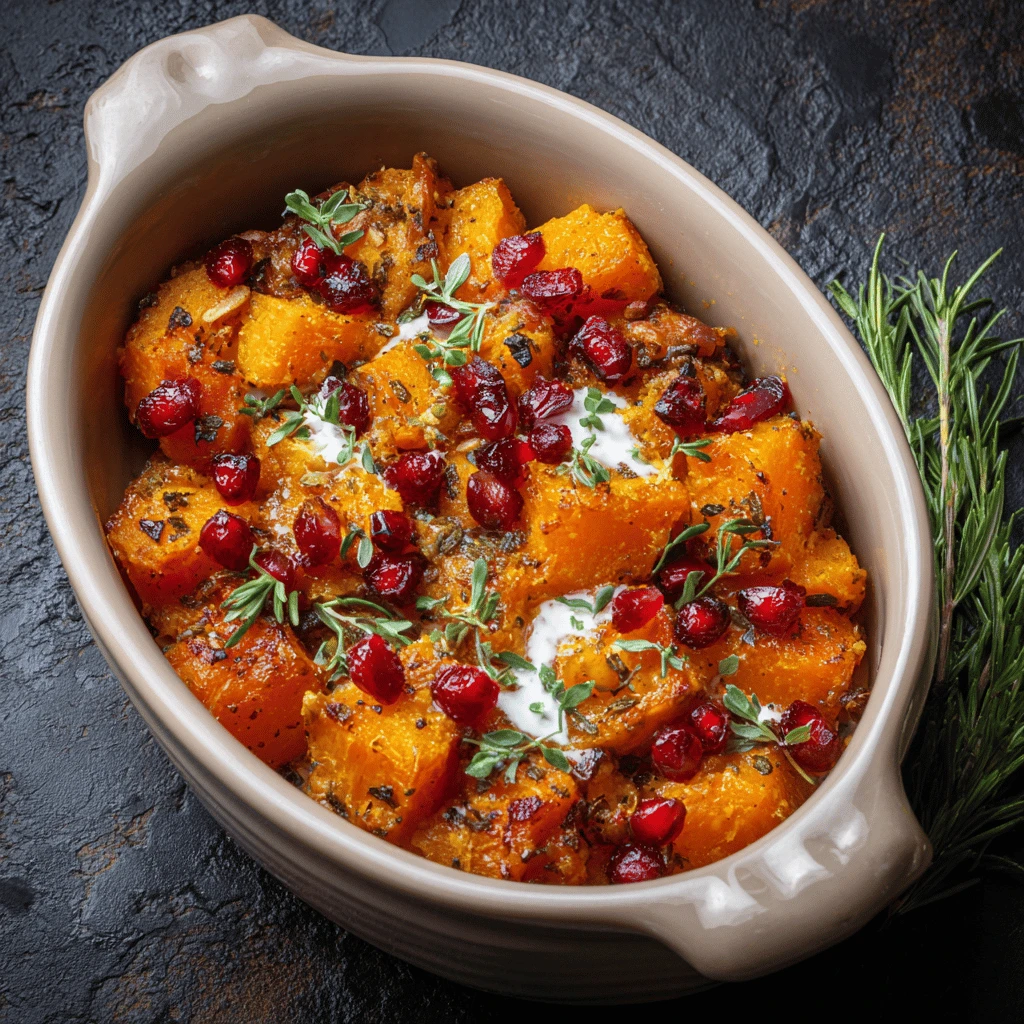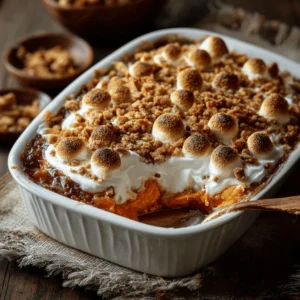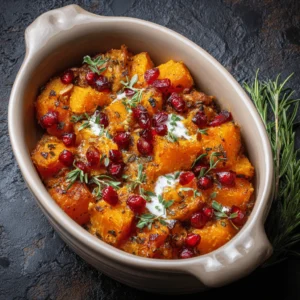Roasted Butternut Squash Thanksgiving Dish
Thanksgiving is a celebration of gratitude, family, and, of course, food. Among the myriad of side dishes that grace the Thanksgiving table, roasted butternut squash stands out as a vibrant and versatile option. Its naturally sweet flavor and creamy texture make it a crowd-pleaser, and it pairs beautifully with both savory and sweet accompaniments. This guide provides everything you need to create a standout roasted butternut squash dish for your Thanksgiving feast.
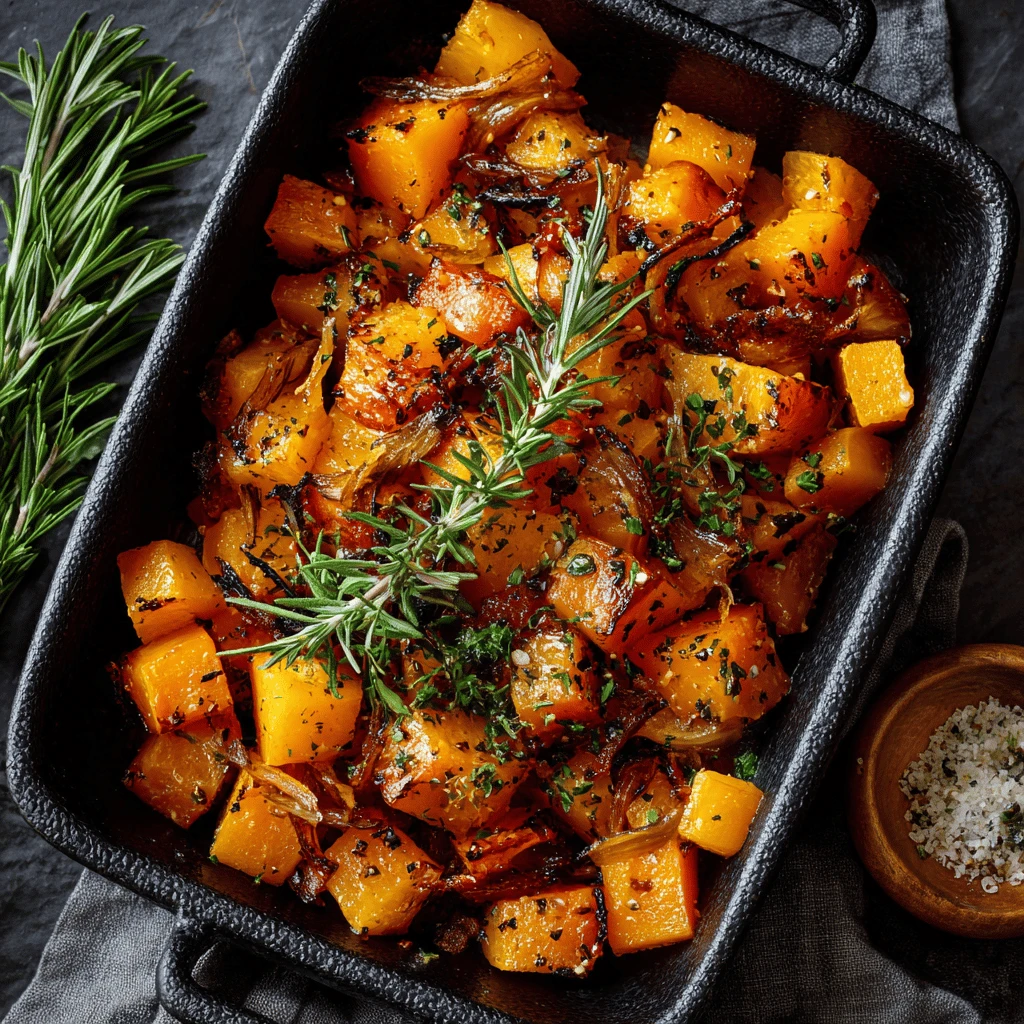
Preparing Your Butternut Squash
Before you can roast your butternut squash, you need to prepare it. Selecting the right squash and properly cutting it are crucial steps.
Selecting the Perfect Squash
When choosing a butternut squash, look for one that is firm, heavy for its size, and has a deep beige color. Avoid squash with soft spots, bruises, or cracks. The stem should be intact and dry. A heavier squash indicates it’s denser and has more flesh. A good squash should also have a long neck and a small bulb, as most of the edible flesh is in the neck. This shape makes it easier to peel and cut.
Cutting Techniques
Cutting a butternut squash can be daunting, but with the right technique, it’s manageable.
- Safety First: Use a sharp, heavy-duty knife and a stable cutting board. Place a damp towel under the cutting board to prevent it from slipping.
- Softening the Squash: If the squash is very hard, you can microwave it for 2-3 minutes to soften the skin slightly.
- Cutting in Half: Trim off the stem and the bottom end of the squash. Stand the squash upright and carefully cut it in half lengthwise, from top to bottom.
- Seeding: Use a spoon to scoop out the seeds and stringy fibers from the center of each half.
- Peeling (Optional): Peeling the squash before roasting is optional but results in a smoother texture. Use a vegetable peeler to remove the skin, or roast it with the skin on and scoop out the flesh after cooking.
- Cubing or Slicing: Once the squash is halved and seeded, you can cut it into cubes, slices, or wedges, depending on your preference and the recipe. Uniform pieces ensure even cooking.
Roasting for Optimal Flavor
Roasting is the key to unlocking the butternut squash’s natural sweetness and creating a caramelized exterior.
Temperature and Time
The ideal roasting temperature for butternut squash is typically between 400°F (200°C) and 425°F (220°C). This high heat allows the squash to caramelize on the outside while becoming tender on the inside.
- Temperature: 400°F – 425°F (200°C – 220°C)
- Roasting Time: 25-40 minutes, depending on the size and thickness of the pieces.
Seasoning Strategies
The right seasonings can enhance the butternut squash’s flavor and complement other dishes on your Thanksgiving table.
- Simple and Classic: Toss the squash with olive oil, salt, and pepper. This simple seasoning allows the natural flavor of the squash to shine through.
- Sweet and Spicy: Add a touch of sweetness with maple syrup or brown sugar, combined with spices like cinnamon, nutmeg, and a pinch of cayenne pepper for a subtle kick.
- Savory Herbs: Experiment with herbs like thyme, rosemary, or sage. These herbs pair well with the squash’s sweetness and add an earthy note.
- Balsamic Glaze: Drizzle balsamic glaze over the roasted squash for a tangy and slightly sweet flavor.
- Garlic and Onion: Roast the squash with minced garlic and thinly sliced red onion for a savory and aromatic dish.
Roasting Techniques
- Single Layer: Arrange the squash in a single layer on a baking sheet. Overcrowding the pan will steam the squash instead of roasting it.
- Tossing: Toss the squash with olive oil and seasonings before spreading it on the baking sheet. This ensures that each piece is evenly coated.
- Flipping (Optional): Flipping the squash halfway through roasting can help it brown evenly on all sides.
- Doneness: The squash is done when it’s tender and easily pierced with a fork. The edges should be slightly caramelized.
Elevating Your Roasted Butternut Squash: Creative Variations
Roasted butternut squash is delicious on its own, but it can also be elevated with various additions and preparations.
Adding Nuts and Seeds
Nuts and seeds add texture and a nutty flavor to roasted butternut squash.
- Pecans: Toasted pecans provide a rich, buttery flavor that complements the squash’s sweetness.
- Walnuts: Walnuts offer a slightly bitter and earthy note.
- Pumpkin Seeds (Pepitas): Pumpkin seeds add a crunchy texture and a subtle nutty flavor.
- Toasting: Toast the nuts and seeds before adding them to the squash for enhanced flavor and crunch.
Incorporating Fruits and Vegetables
Fruits and vegetables can add sweetness, acidity, and vibrant colors to your roasted butternut squash dish.
- Apples: Diced apples, such as Honeycrisp or Granny Smith, add sweetness and a slight tartness.
- Cranberries: Fresh or dried cranberries provide a tart and festive flavor.
- Brussels Sprouts: Roasted Brussels sprouts add a savory and slightly bitter element.
- Red Onion: Thinly sliced red onion caramelizes beautifully and adds a savory sweetness.
Cheese and Dairy Accents
A touch of cheese or dairy can add richness and creaminess to roasted butternut squash.
- Feta Cheese: Crumbled feta cheese provides a salty and tangy contrast to the squash’s sweetness.
- Goat Cheese: Goat cheese offers a creamy and tangy flavor.
- Parmesan Cheese: Grated Parmesan cheese adds a savory and salty note.
- Brown Butter: Drizzling brown butter over the roasted squash adds a rich, nutty flavor.
Recipe Inspirations
- Roasted Butternut Squash with Maple Syrup and Pecans: A classic combination that highlights the squash’s natural sweetness.
- Roasted Butternut Squash with Cranberries and Feta: A festive and flavorful dish with a balance of sweet, tart, and salty elements.
- Roasted Butternut Squash with Brussels Sprouts and Balsamic Glaze: A savory and sophisticated dish with a hint of sweetness.
Serving Suggestions and Pairings
Once your roasted butternut squash is ready, consider how to best present and pair it with other Thanksgiving dishes.
Presentation Ideas
- Serving Dish: Transfer the roasted squash to a serving dish and garnish with fresh herbs, toasted nuts, or crumbled cheese.
- Puree: Puree the roasted squash for a smooth and creamy side dish or soup base.
- Stuffing: Use the roasted squash as a filling for stuffed pasta or vegetables.
- Salad: Add the roasted squash to a salad with mixed greens, goat cheese, and a vinaigrette dressing.
Thanksgiving Meal Pairings
Roasted butternut squash pairs well with a variety of Thanksgiving dishes.
- Turkey: The squash’s sweetness complements the savory flavor of turkey.
- Stuffing: The squash can be added to stuffing for added flavor and moisture.
- Cranberry Sauce: The tartness of cranberry sauce balances the squash’s sweetness.
- Mashed Potatoes: The squash adds a creamy and colorful element to the Thanksgiving table.
- Green Bean Casserole: The squash provides a healthy and flavorful alternative to traditional green bean casserole.
Leftover Transformations
Don’t let leftover roasted butternut squash go to waste. Here are some ideas for transforming it into new dishes:
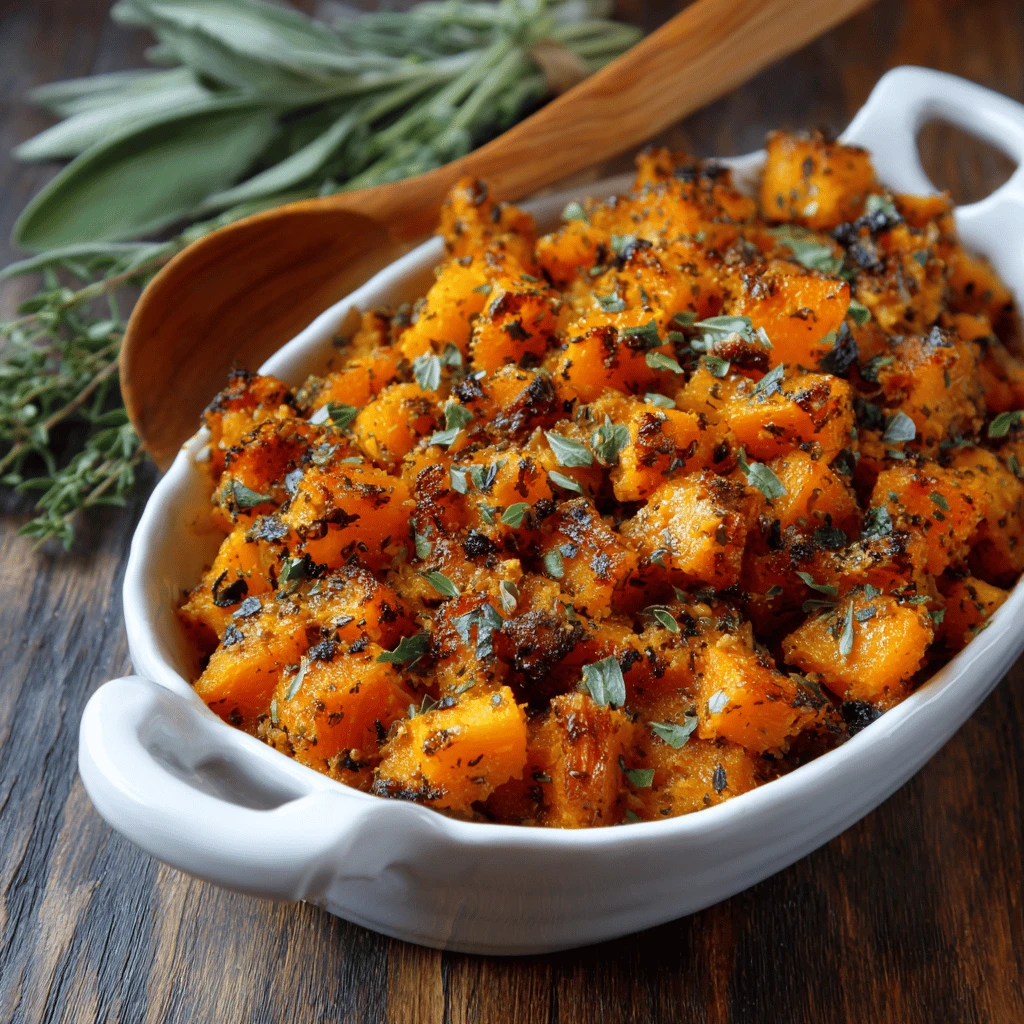
- Soup: Blend the squash with broth and seasonings for a creamy and comforting soup.
- Pasta Sauce: Puree the squash and use it as a sauce for pasta.
- Quesadillas: Add the roasted squash to quesadillas with black beans and cheese.
- Pizza Topping: Use the roasted squash as a topping for pizza with goat cheese and caramelized onions.
- Frittata or Quiche: Incorporate the roasted squash into a frittata or quiche for a hearty breakfast or brunch.
Frequently Asked Questions (FAQ)
- How do I make butternut squash taste better? Roasting it with olive oil, salt, pepper, and a touch of maple syrup or brown sugar enhances its natural sweetness. Adding herbs like thyme or rosemary also elevates the flavor.
- Should you peel butternut squash before roasting? Peeling is optional. Roasting with the skin on can add texture, but peeling beforehand results in a smoother texture.
- How long does it take to roast butternut squash at 400? It typically takes 25-40 minutes, depending on the size and thickness of the pieces. The squash is done when it’s tender and easily pierced with a fork.
- What is butternut squash good with? It pairs well with nuts, seeds, fruits, vegetables, cheese, and herbs.
- Can you eat the skin of butternut squash? Yes, the skin is edible, especially when roasted. However, some people prefer to peel it for a smoother texture. Ensure the skin is well-cleaned before cooking.
